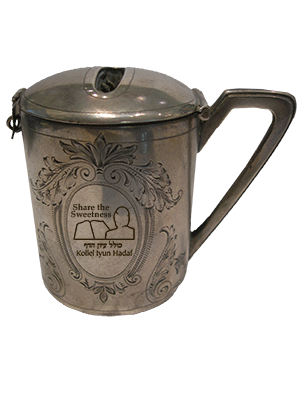
The Internet Center
for the Study of Talmud
brought to you by Kollel Iyun Hadaf
Rosh Kollel: Rav Mordecai Kornfeld
- Summary of the Daf
- If a tree is planted with intent to worship it as an Avodah Zarah, it is forbidden.
Read More - If a tree was cut down or carved in order to worship it as an Avodah Zarah, the tree becomes permitted by removing the new growth.
Read More - If a branch of one tree was grafted onto another tree in order to worship it as an Avodah Zarah, the tree becomes permitted by removing the new growth.
Read More - Shmuel maintains that if a tree was not planted to be worshipped as an Avodah Zarah but later it was worshipped, the growth of the tree is forbidden.
Read More - According to the Tana Kama, any tree under which an Avodah Zarah rests is an Asheirah tree. Rebbi Shimon disagrees.
Read More - According to Rav, if the priests of the Avodah Zarah sit under a tree but do not taste its fruit, the tree is assumed to be an Asheirah.
Read More - According to Shmuel, even if the fruit of a tree is reserved for the production of beer for the Avodah Zarah, the tree is assumed to be an Asheirah.
Read More - It is forbidden to sit in the shade of an Asheirah.
Read More - A person who walks under the branches of an Asheirah becomes Tamei.
Read More - When the branches of an Asheirah protrude into a public domain, one is permitted to pass underneath the branches if there is no other way to go.
Read More - According to the Tana Kama, one is permitted to plant vegetables under an Asheirah tree in the winter but not in the summer. Lettuce may not be planted under an Asheirah tree even in the winter.
Read More - Rebbi Yosi says that vegetables may not be planted under an Asheirah tree even in the winter. The leaves that fall off the tree fertilize the vegetables.
Read More - Rebbi Yosi says that one is permitted to plant a branch from a tree of Orlah, but not a fruit from a tree of Orlah.
Read More - ~ ~ ~ ~ ~ ~
Dafyomi Study-material Locator
Dafyomi Study-schedule Calculator
אתר שומר שבת
D.A.F. is grateful to the following for their
generous grants towards the site's programming & design:
Mrs. G. Kornfeld, Shmuel Kovacs, Asher Schoor
The Estate Distribution Fund of the Gov't of Israel
Mrs. G. Kornfeld, Shmuel Kovacs, Asher Schoor
The Estate Distribution Fund of the Gov't of Israel


